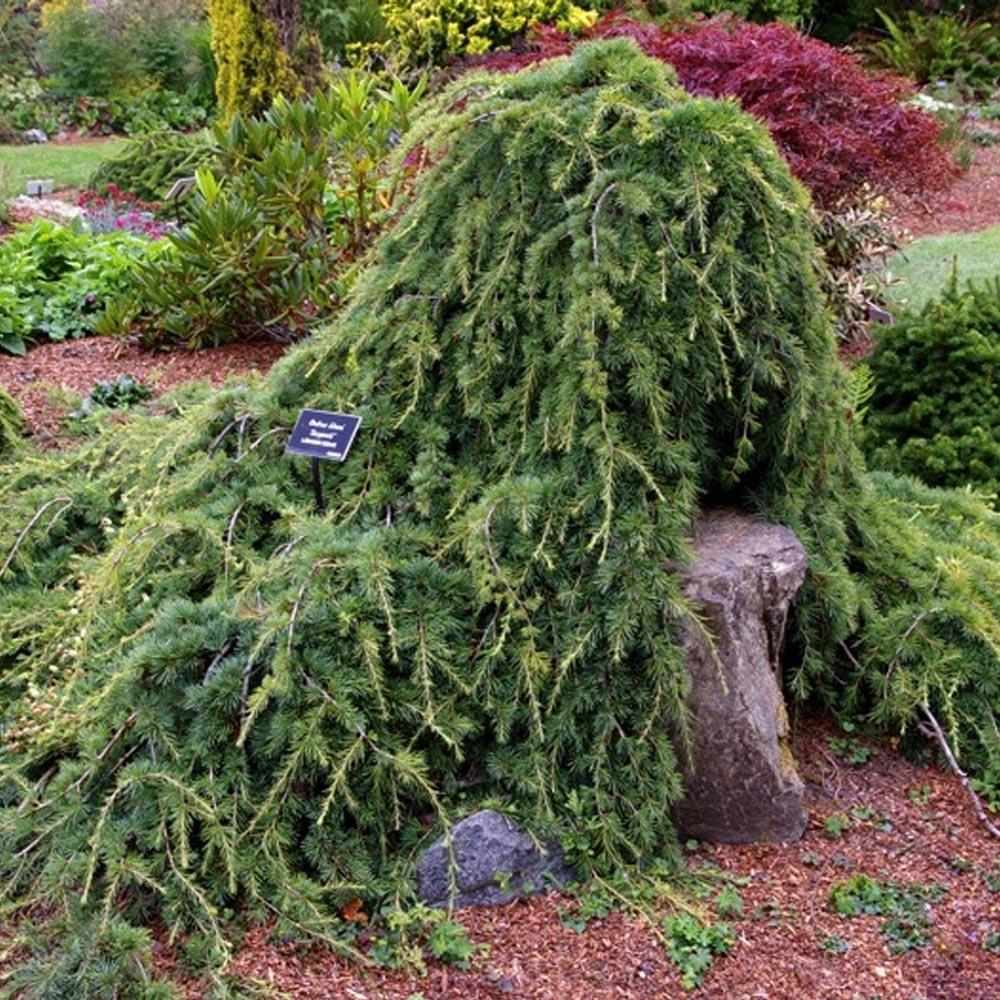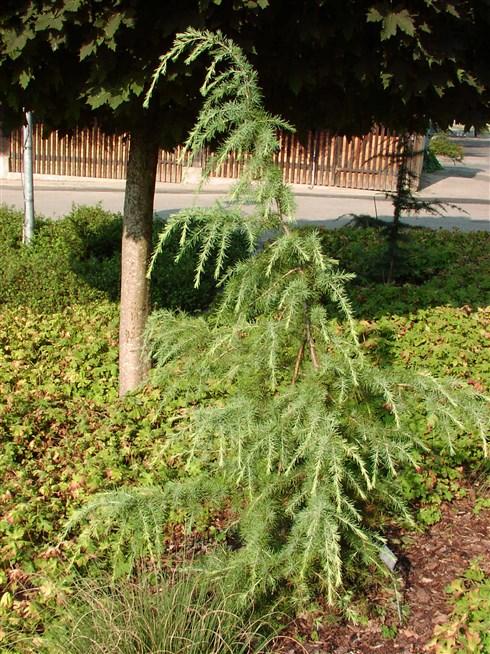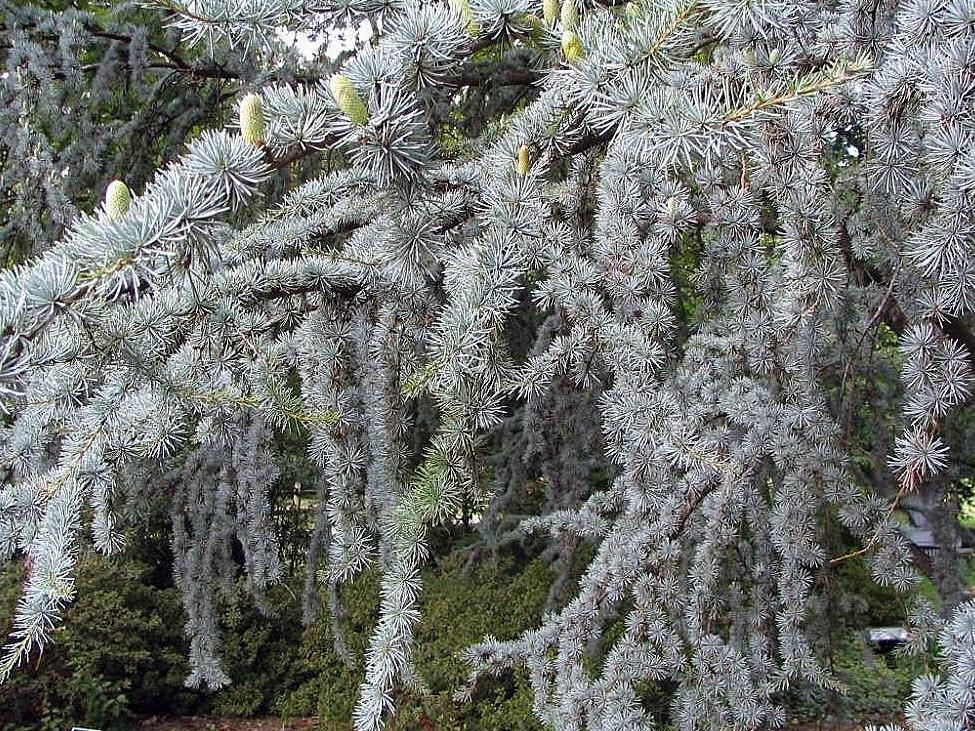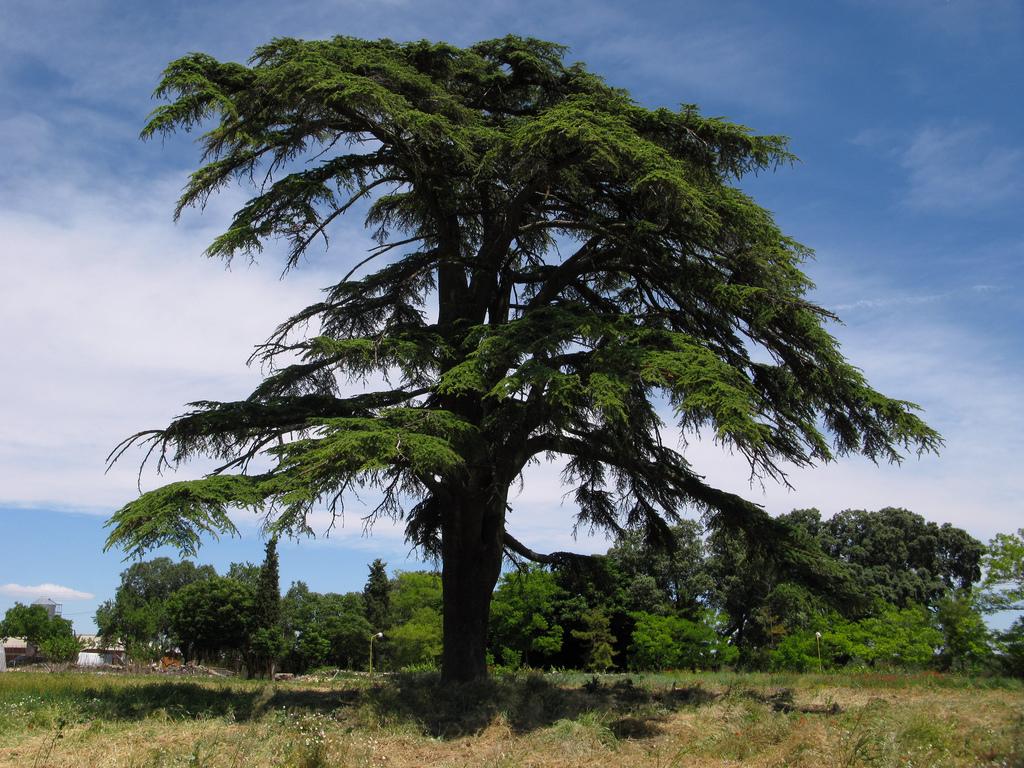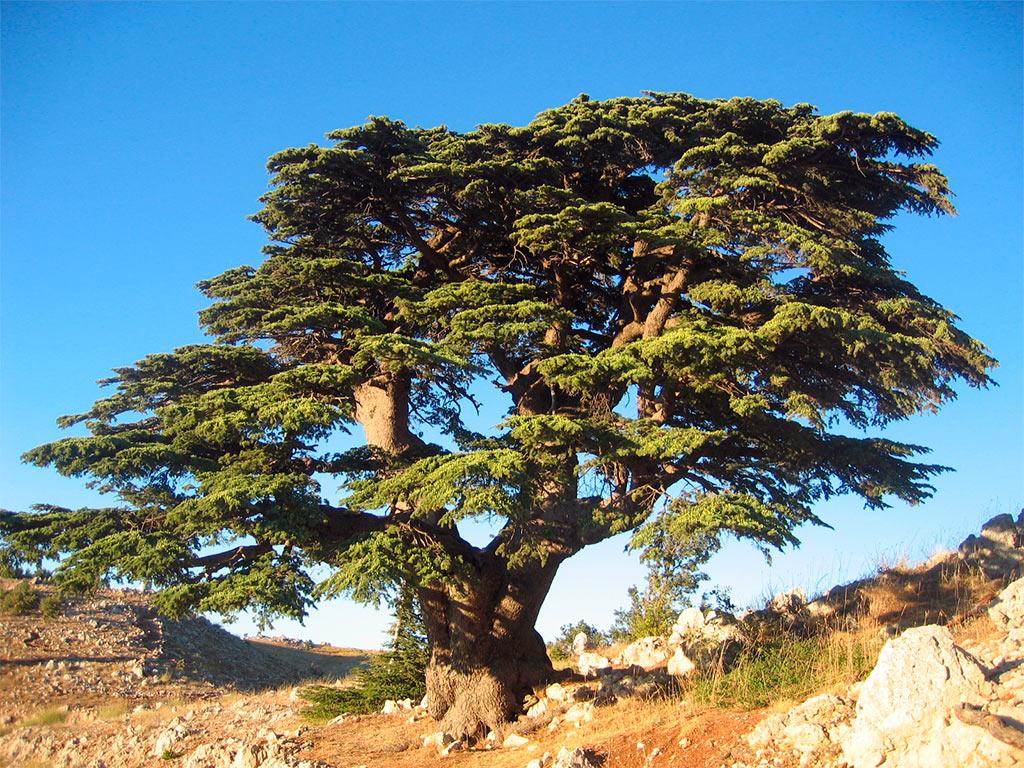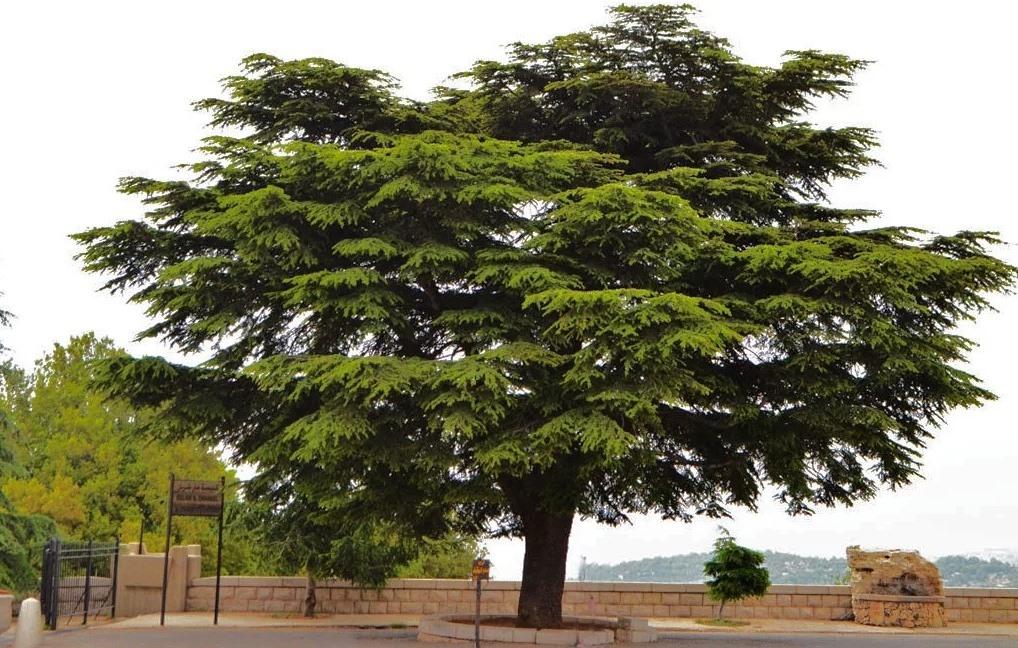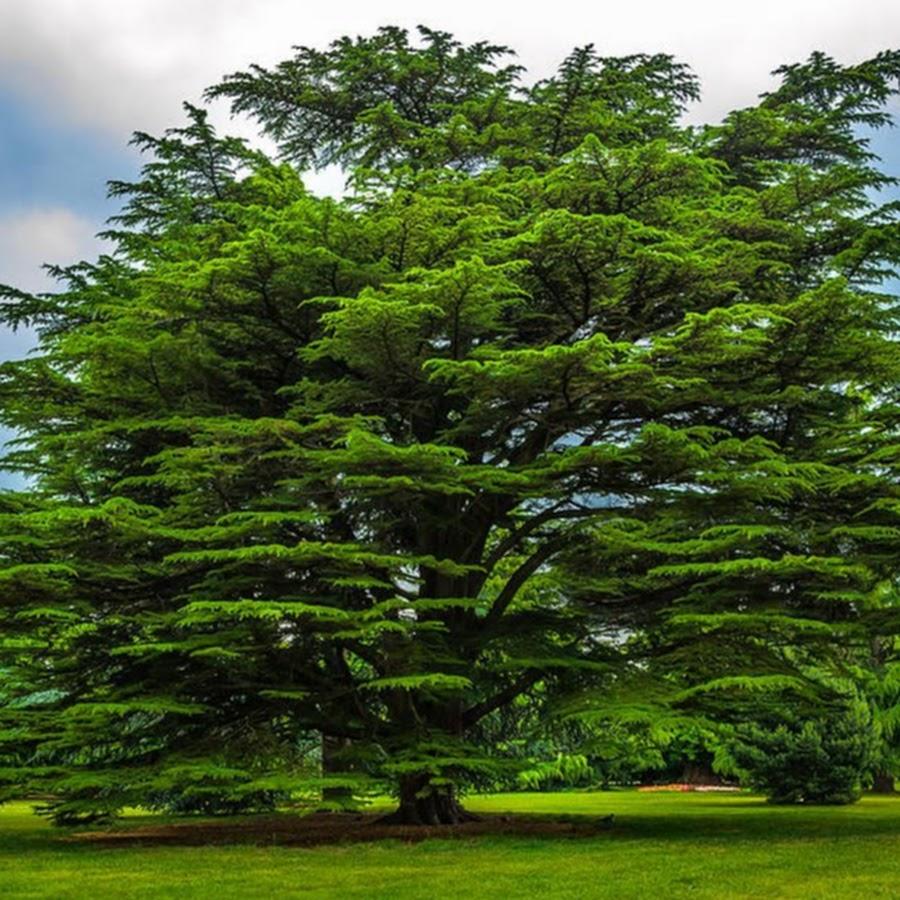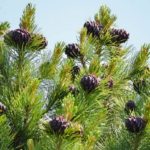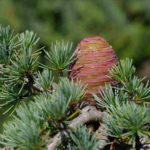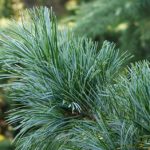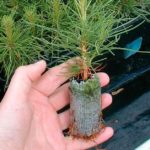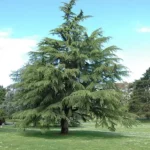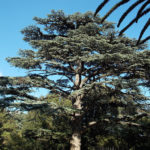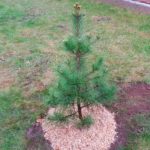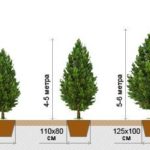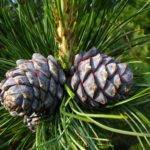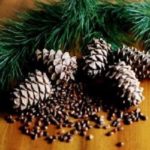The Cedar of Lebanon is an evergreen tree that has a rich history. Its roots go back to the times of Ancient Egypt. Currently, this variety is classified as rare plants that are practically never found in natural conditions. However, breeders have developed quite a few varieties that are suitable for growing in their own garden plots.
Description of appearance
Under natural conditions, Lebanese cedar can reach a height of 50 meters. Moreover, the diameter of its trunk is 2.5 meters. However, on average, the height of trees does not exceed 25-30 meters. They are characterized by thick, dark gray bark.
Young cedars have a conical crown, which is characteristic of representatives of the Pine family. From the age of 15, the tree's shoots are placed almost horizontally. At the same time, the shape of the top becomes flat and expands, resembling a huge umbrella.
Lebanese cedar has tetrahedral needles that are blue or bluish-green in color. It forms bunches of 20-30 pieces. The size of the needles reaches 4 centimeters. The needles are gradually renewed at intervals of 2 years. The tree synthesizes many phytoncides, which are destructive to fungi and harmful insects.
The cones of the plant are cylindrical in shape and have a brown tint. Their width is 4-6 centimeters, and their length is 12. Inside the fruits there are inedible resinous seeds, the size of which is 15-18 millimeters. They are equipped with light wings. The appearance of cones is observed only at 25 years of age. At the same time, the cedar bears fruit 2 times a year.
The lifespan of a culture reaches several thousand years. At the same time, cedar is characterized by rather slow development. The culture is considered undemanding in terms of soil composition. It easily withstands clayey, sandy loam, and well-known soils. However, wood can hardly tolerate stagnant moisture. At the same time, cedar is not too sensitive to prolonged drought.
Distribution area
According to the description, Lebanese cedars are found naturally in mountainous regions of Syria, Turkey, Transcaucasia, and northern Asia that are inaccessible to people. They are also found in Algeria, Morocco and southern Europe.
Varieties of wood
Cedar pine is considered a very popular plant. It is often used in landscape design. Thanks to the efforts of breeders, quite a few types of Lebanese cedar have been obtained that can be grown in garden plots and parks.
Sargentii
This variety was bred in Japan. Its distinctive features are considered to be undemanding in care and planting. The culture develops well in both sandy soil and rocky areas. Therefore, it can be grown in Mediterranean countries. The needles have a rich emerald color. The crown spreads along the ground, and the culture itself is a semi-dwarf variety.
The maximum height of the plant does not exceed 3 meters. Moreover, over the course of a year it increases by literally 0.2-0.3 millimeters. The roots of the tree go 3 meters deep. Shady places without direct sunlight are suitable for its development.
Beacon Hill
This plant is compact in size. It grows up to 5 meters in height and has weeping branches. Due to its visual appeal, culture is very popular among designers. The Beacon Hill variety is characterized by bright green lush needles and a beautiful golden trunk.
This variety of cedar is widespread, but it is best adapted to hot climates. Its root system is covered with many small pores that can absorb and retain the maximum amount of moisture.Therefore, this plant develops well in open, well-lit areas.
Glauca
This tree closely resembles standard Lebanese cedar. It grows up to 50 meters in height, and up to 2 meters in diameter. Over the course of a year, the crop increases by 1-2 centimeters. The bark is dark in color with reddish notes. As it ages, the color of the trunk changes. In young plants, the bark has a light gray tint, and with age it darkens.
Fruiting of cedar of this variety begins at 6 years. During this period, the tree is decorated with large cones that have a purple tint. Inside the fruit there is a special aromatic oil that provides the crop with reliable protection from parasites. The Glauka variety is found in many gardens and parks. This is due to its wide distribution and fertility.
Correct fit
To plant a Lebanese cedar, you need to select a seedling and a suitable site. Experts advise using healthy plants that do not have cracks or areas of rot. It is best to purchase planting material from a local nursery. The best option would be seedlings with closed roots. Work should be carried out in the fall before the soil freezes. It is best to plant in October or November.
All representatives of the Pine family are considered very light-loving. They have difficulty accepting the effects of excess moisture. Young plants can easily withstand shady areas, but by the age of 16 they require more light. Therefore, Lebanese cedar seedlings should be planted in sunny areas with light loam.
It is also acceptable to place Cedar of Lebanon in sandy soil. However, in this case, the tree needs more frequent watering, and in winter there is a high probability of freezing of the root system.It is important that the groundwater at the planting site is quite deep. This will help avoid root rot and the development of fungal infections. You should also avoid the influence of north wind, cold air, and drafts.
Lebanese cedar seedlings adapt well to loose and nutritious soil. Therefore, at least a month before planting, it is worth digging up the area with a spade and adding any organic matter - it can be compost or humus.
After preliminary manipulations, a landing recess should be made. Its size should correspond to the roots of the Lebanese cedar. Typically, gardeners advise making a hole 30% larger than the earthen ball on the roots of the plant.
The bottom of the recess should be filled with a layer of expanded clay and fertile soil. You also need to add 3 buckets of compost or humus. Additionally, it is recommended to add a handful of wood ash and a couple of handfuls of pine soil. In addition, you need to use a combined fertilizer for conifers.
When planting one crop, it is important to ensure that the soil within a radius of 2 meters from the planting hole has been fed and dug up. All layers in the recess must be compacted every 15 centimeters. Otherwise, there is a risk of exposing the root collar.
After using all the important elements, you need to mix the contents of the hole well with a shovel, cover it with black plastic wrap and leave for 3-4 weeks. This will help achieve the formation of favorable microflora.
After the specified time has passed, the shelter can be removed and rooting of the seedling can begin. When planting several cedars, it is worth maintaining a distance of 8 meters between them. Dwarf varieties can be placed at intervals of 3 meters.
After completion of planting work, the cedar needs 3-4 weeks to adapt to new conditions.In preparation for planting, the hole often settles. In such a situation, it is necessary to restore its shape and size. If necessary, it is permissible to add fertile substrate to the hole. It is important that there is 20 centimeters left to the top of the recess.
To plant a Lebanese cedar, it is recommended to do the following:
- Drive a wooden peg into the central part of the hole to secure the young trunk.
- To prevent rotting of the root system, burn the edge of the wood and treat it with a weak solution of potassium permanganate.
- If the tap root is damaged, it must be trimmed and treated with disinfectants.
- Before planting, it is advisable to keep the seedling in a growth stimulator for several hours. This will help saturate the plant with moisture and valuable substances.
- Carefully place the seedling near the stake and straighten the roots. It is important that the root collar is flush with the ground surface.
- Tie the tree trunk to the support.
- Fill the voids around the roots with fertile soil and compact.
- Water the cedar well. For 1 plant, you should use at least 6 liters of settled water at room temperature.
- Cover the tree trunk circle with a mulch layer. To do this, you can use bark, sawdust and fallen pine needles.
How to care for a tree
For cedar growing to be successful, it is important to create suitable conditions for it. In this case, it is necessary to follow a number of care rules.
Watering and fertilizing
Lebanese cedar does not tolerate increased swampiness of the soil. In adulthood, it can withstand dry weather well. Young plants require special attention - especially within 2 weeks after planting. At this time, it is recommended to water the seedlings at intervals of 2-3 days.For 1 plant it is worth using 5-6 liters of water.
When growing ornamental varieties, it is recommended to avoid drying out the soil in the tree trunk circle. It is important that it is moderately moist. To avoid weathering of water from the soil and to facilitate plant care, it is necessary to cover the planting site with a mulch layer. It needs to be loosened periodically. This will improve aeration of the root system and activate crop growth.
To feed the ephedra, it is recommended to use products based on potassium and phosphorus. In this case, it is worth using ready-made mineral complexes. Effective drugs include Agricola and Kemira. They should be dissolved in water or embedded in the soil before watering. Lebanese cedar needs to be fertilized three times per season. This is done in May, July and September.
Trimming
The crown of Lebanese cedar is formed naturally. Therefore, additional procedures are not required for this. An exception is the situation when a tree has 2 trunks. In such a situation, it is important to get rid of the less developed branch.
In spring and autumn, it is recommended to carry out sanitary pruning. This procedure is performed while the movement of juices is slowing down. In this case, you need to get rid of dry, broken and frozen shoots. After completing the manipulation, garden varnish is applied to the cut site.
Preparing for winter
In order for cedar to survive the winter normally, it needs to be prepared for cold weather. The breed remains viable when temperatures drop to -30 degrees. At the stage of preparation for winter, the tree needs to be watered abundantly.Moist soil protects the root system well from freezing. You also need to add peat or humus to the tree trunk circle. The thickness of this layer is 10-15 centimeters.
Young trees need to be covered. To do this, you need to make a frame over them and fix the non-woven fabric. It is not recommended to use polyethylene film for this. It does not allow moisture and air to pass through. As humidity and temperature increase, wood begins to rot quickly.
Pest and disease control
Cedar of Lebanon often suffers from fungal infections. These include trunk rot and pine needle rust. For treatment, you can use such products as “Ordan” and “Abika-Pik”. Plantings should be sprayed with working fluid in the evening or in cloudy weather. Affected branches need to be pruned. This prevents the spread of infections.
Among the pests, the tree may suffer from attacks by pine silkworms and bark beetles. Parasites can be identified by the presence of dense cocoons made of spider webs. Affected trees cause deformation of shoots and dropping of needles. To destroy parasites, insecticides such as Actellik, Lepidocid, and Arrivo should be used. Treatments are repeated after 2 weeks.
Reproduction
Coniferous plants can be propagated by seeds or cuttings. When using the seed method, the varietal qualities of the crop are not preserved. Therefore, cuttings are most often used. To do this, you need to cut off the shoots of an adult tree measuring 10 centimeters. The work is carried out in the spring - during the period of swelling of the buds. The cuttings are immersed in water, adding a root growth stimulator. After this, the shoots are rooted in the greenhouse.
In order for the cuttings to take root, it is recommended to provide the following conditions:
- high humidity;
- regular loosening;
- special substrate made of sand, mycorrhiza and humus.
What is it used for?
Lebanese cedar is listed in the International Red Book - this is due to the value of its wood. This substance has excellent decorative qualities and a number of valuable properties.
Lebanese cedar oil contains many valuable microelements, including unique organic acids. The use of this product helps achieve the following effects:
- improvement of visual functions;
- removal of toxic substances;
- skin rejuvenation;
- strengthening blood vessels.
Lebanese cedar is a unique plant that has high decorative characteristics and provides health benefits. At the same time, it is important to carry out planting work correctly and provide the crop with balanced care.


